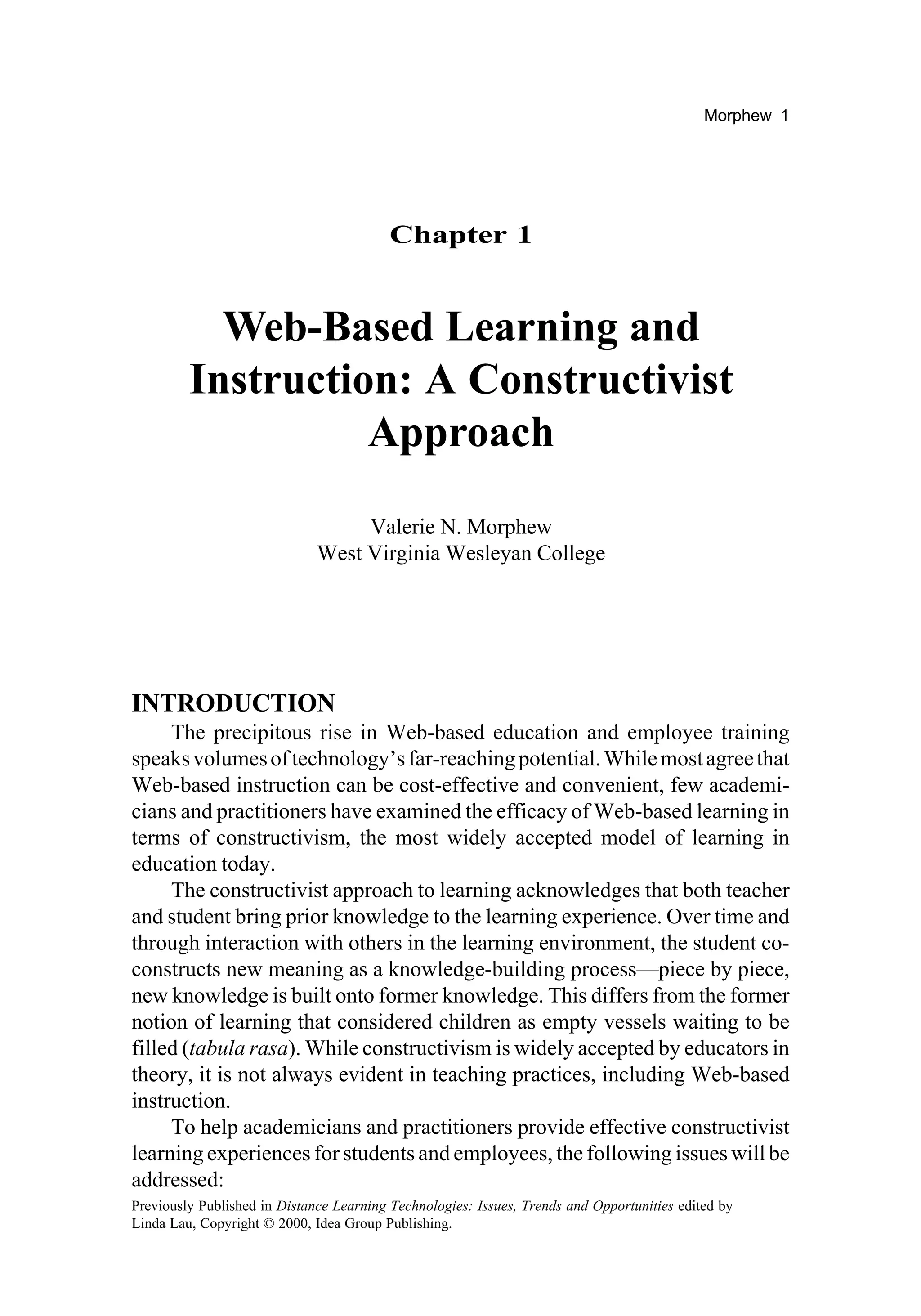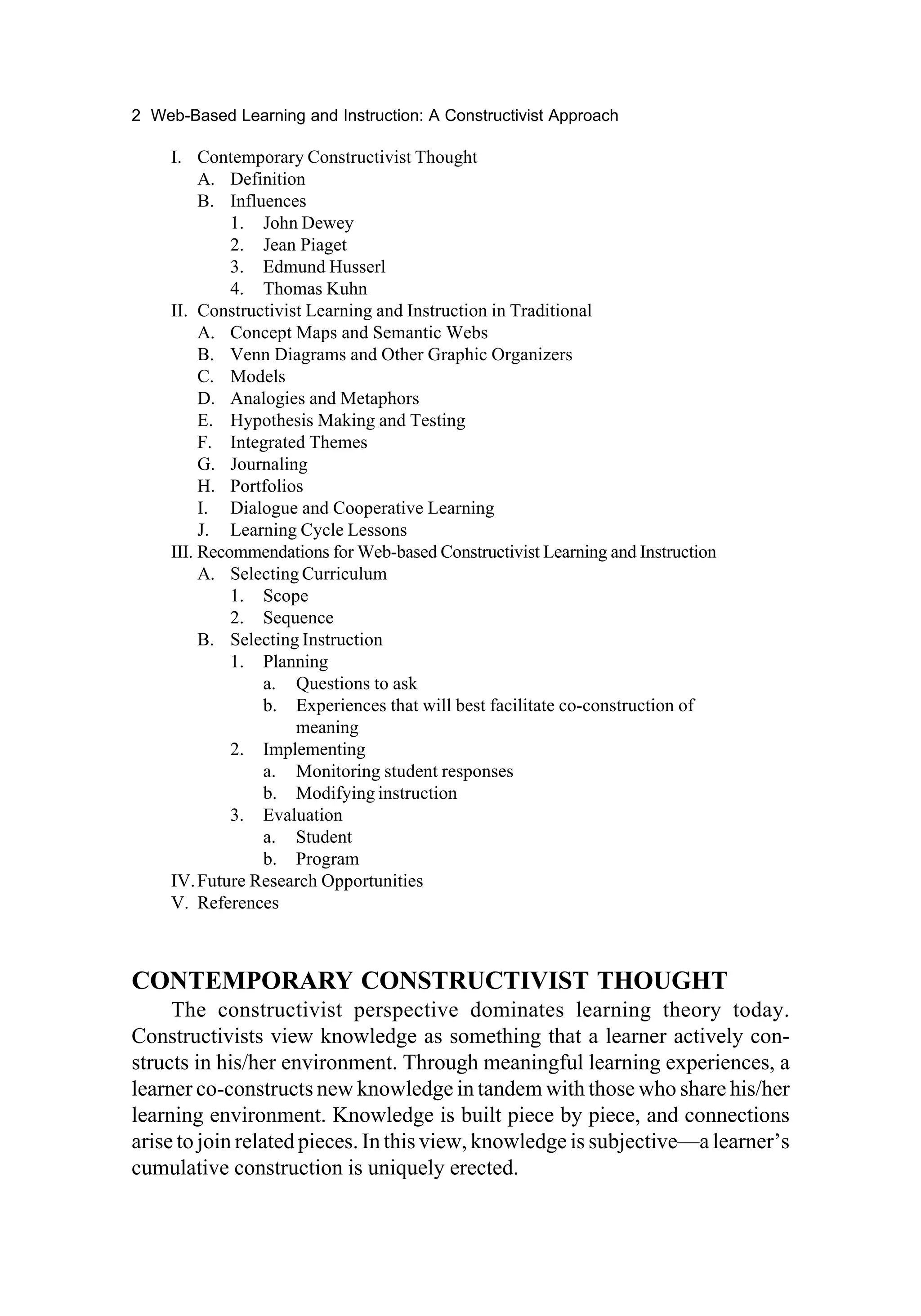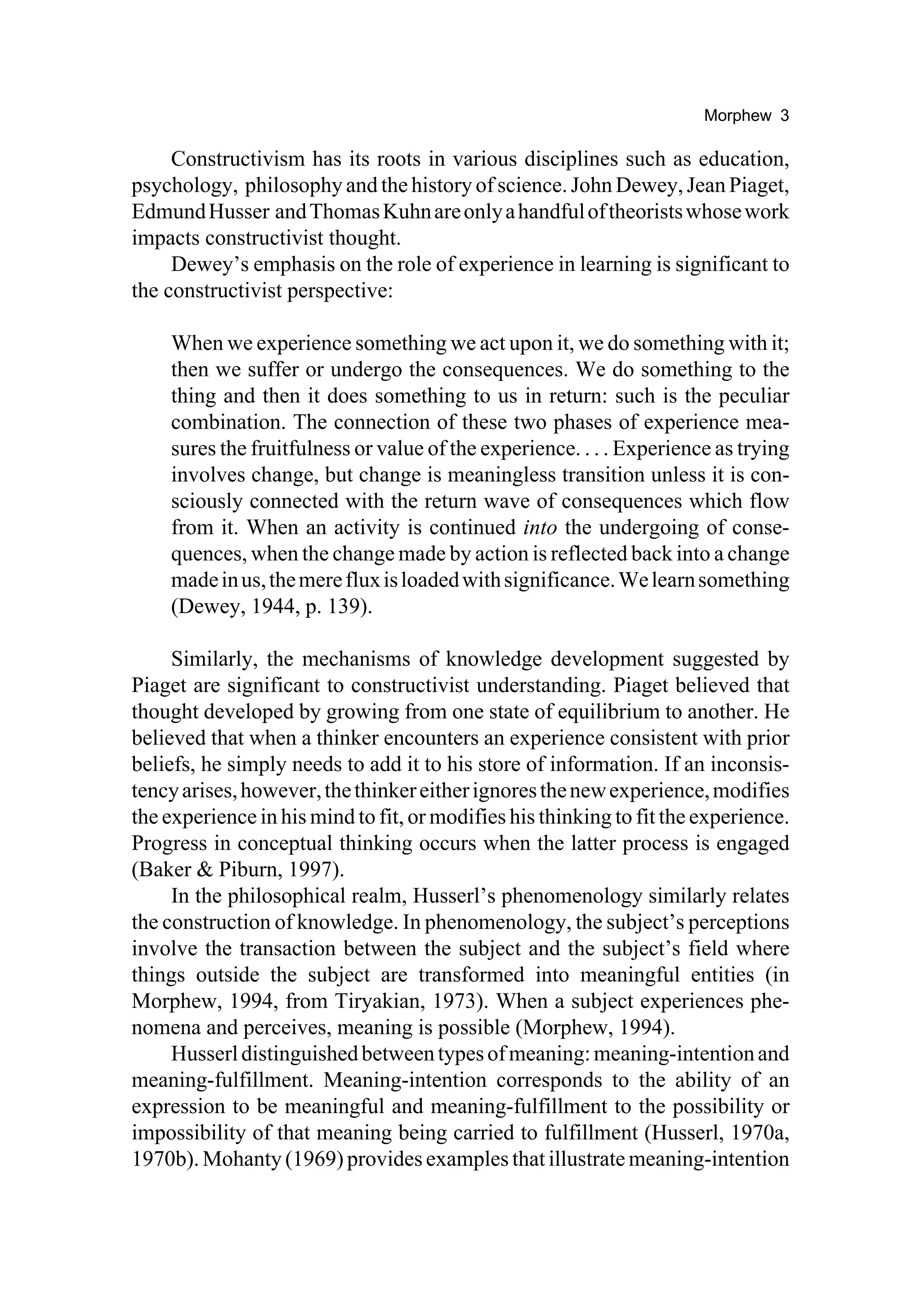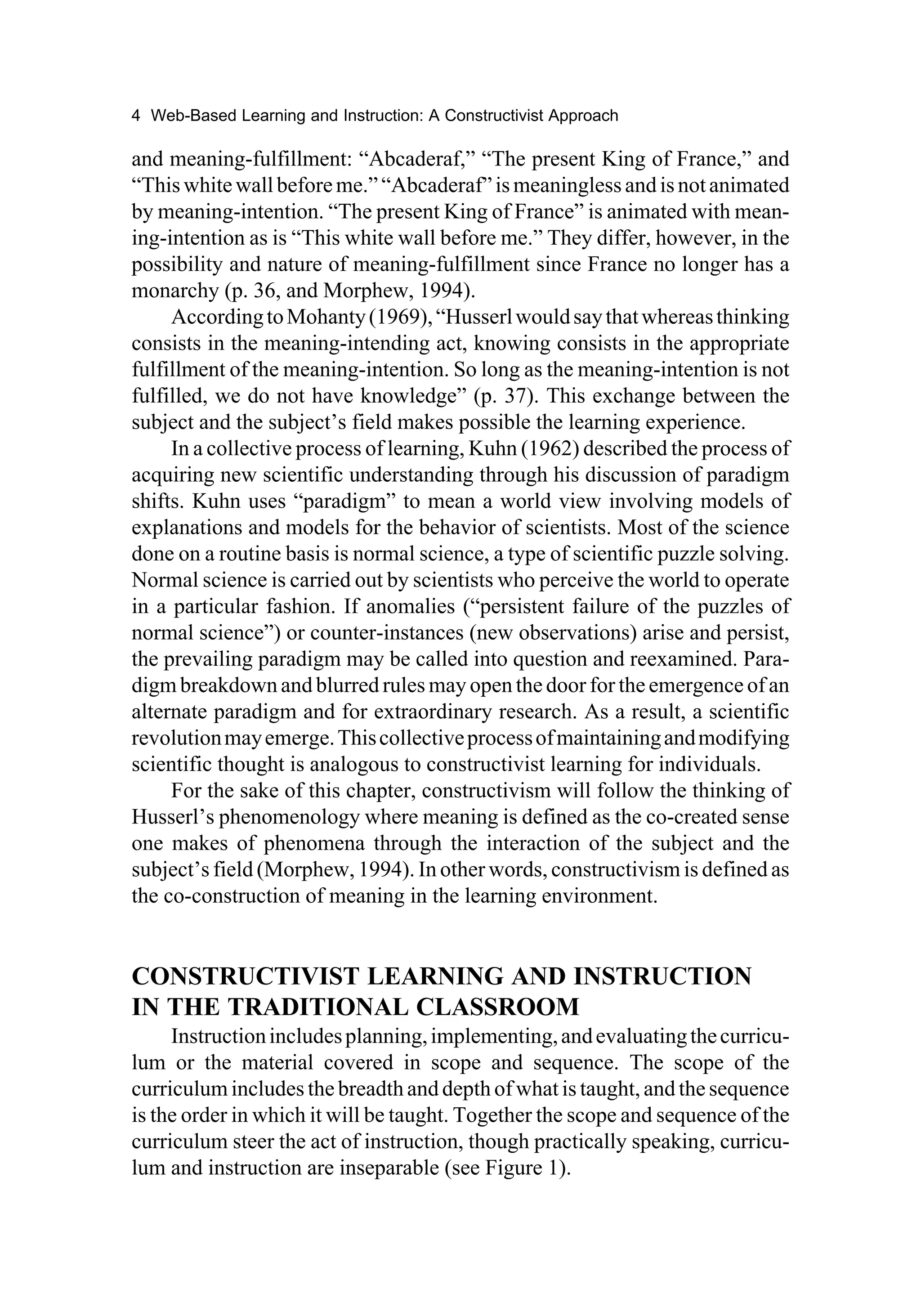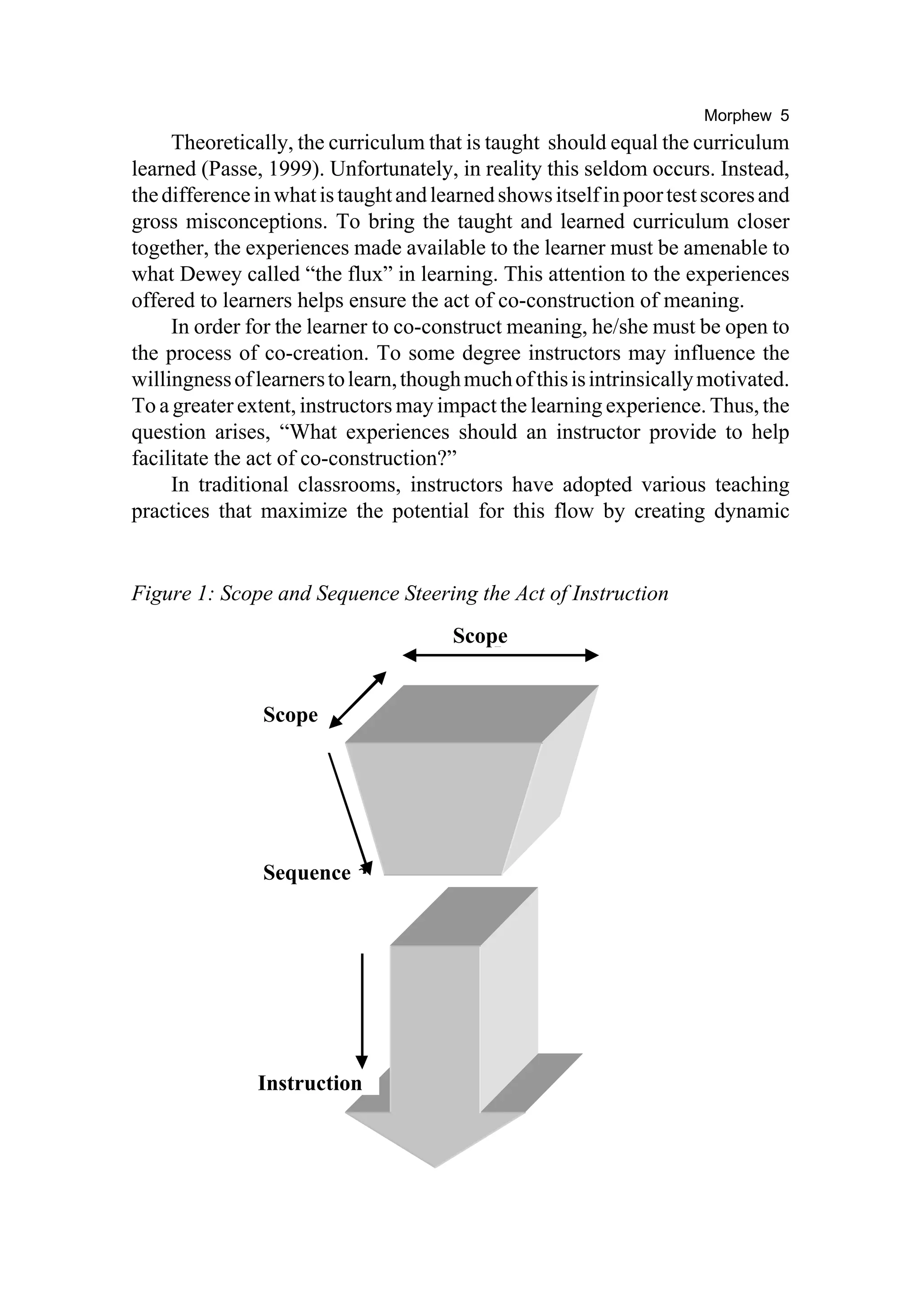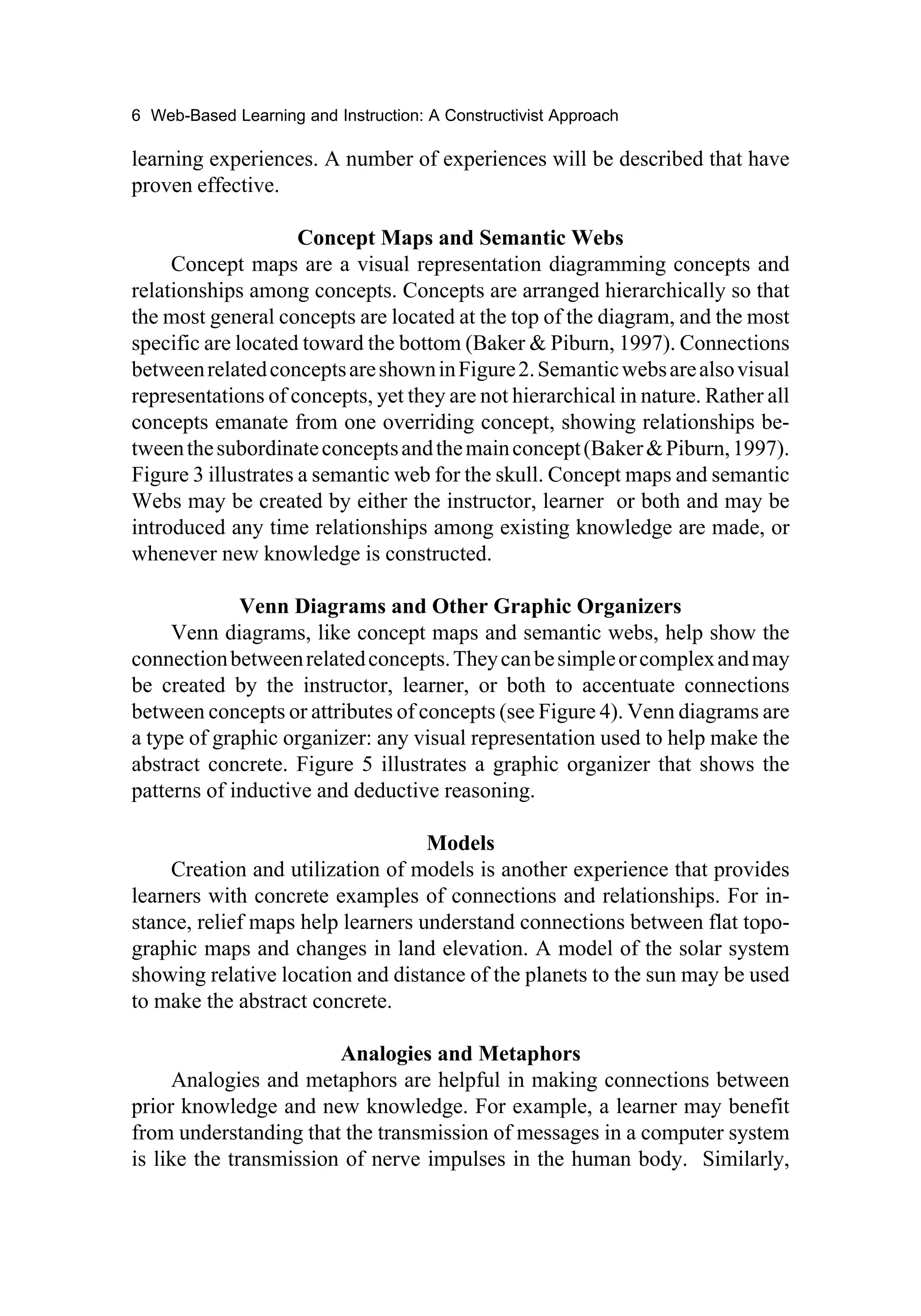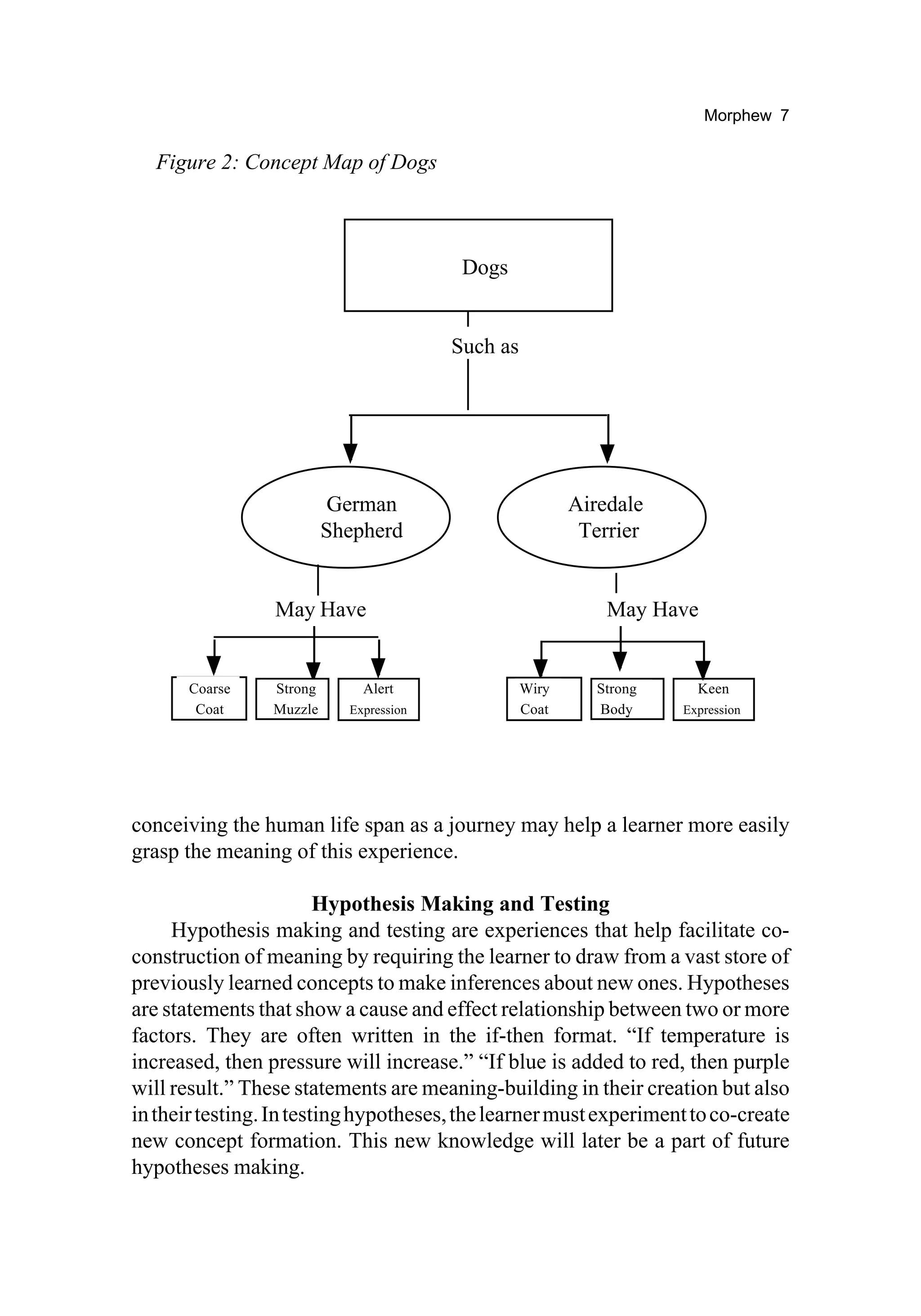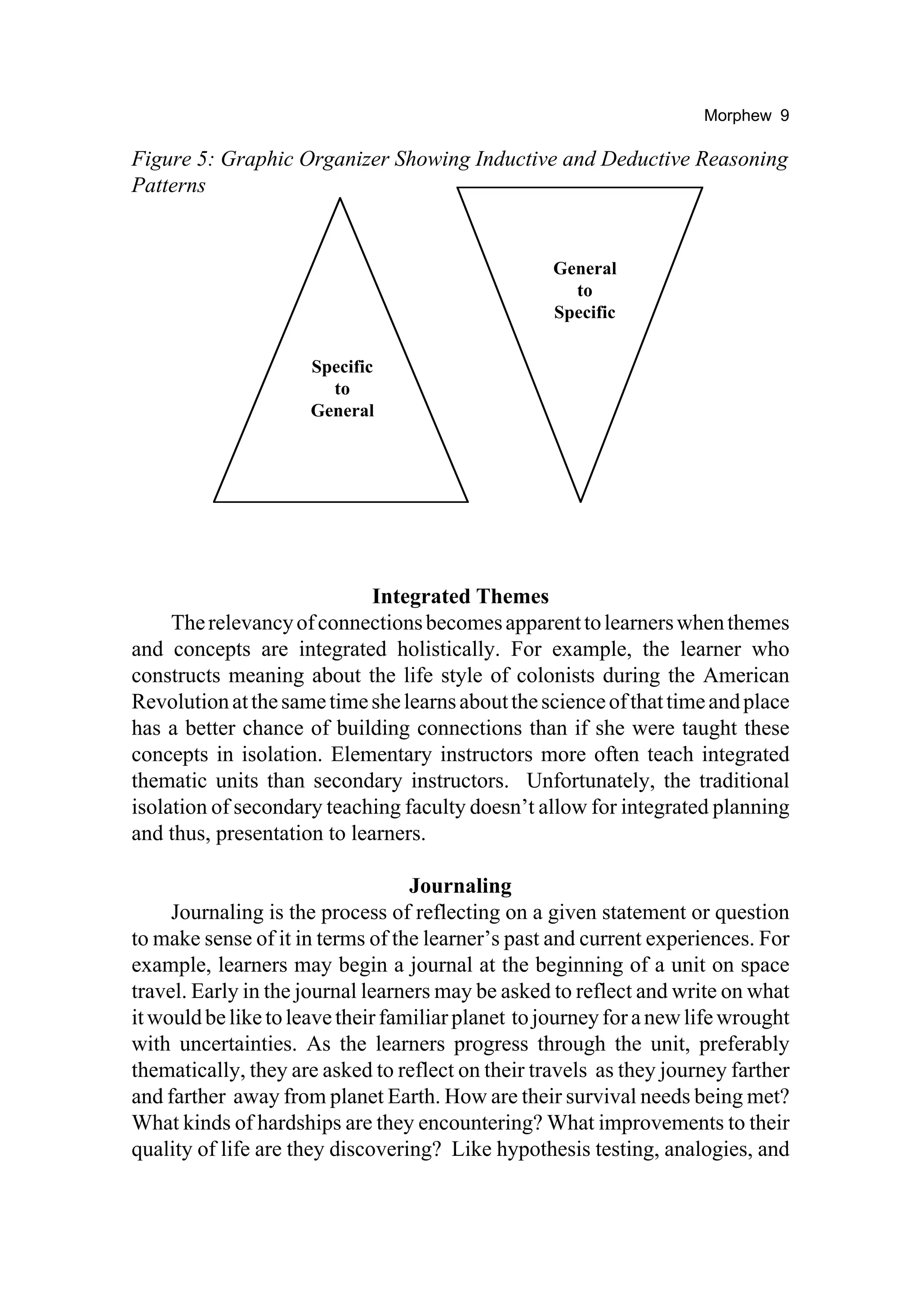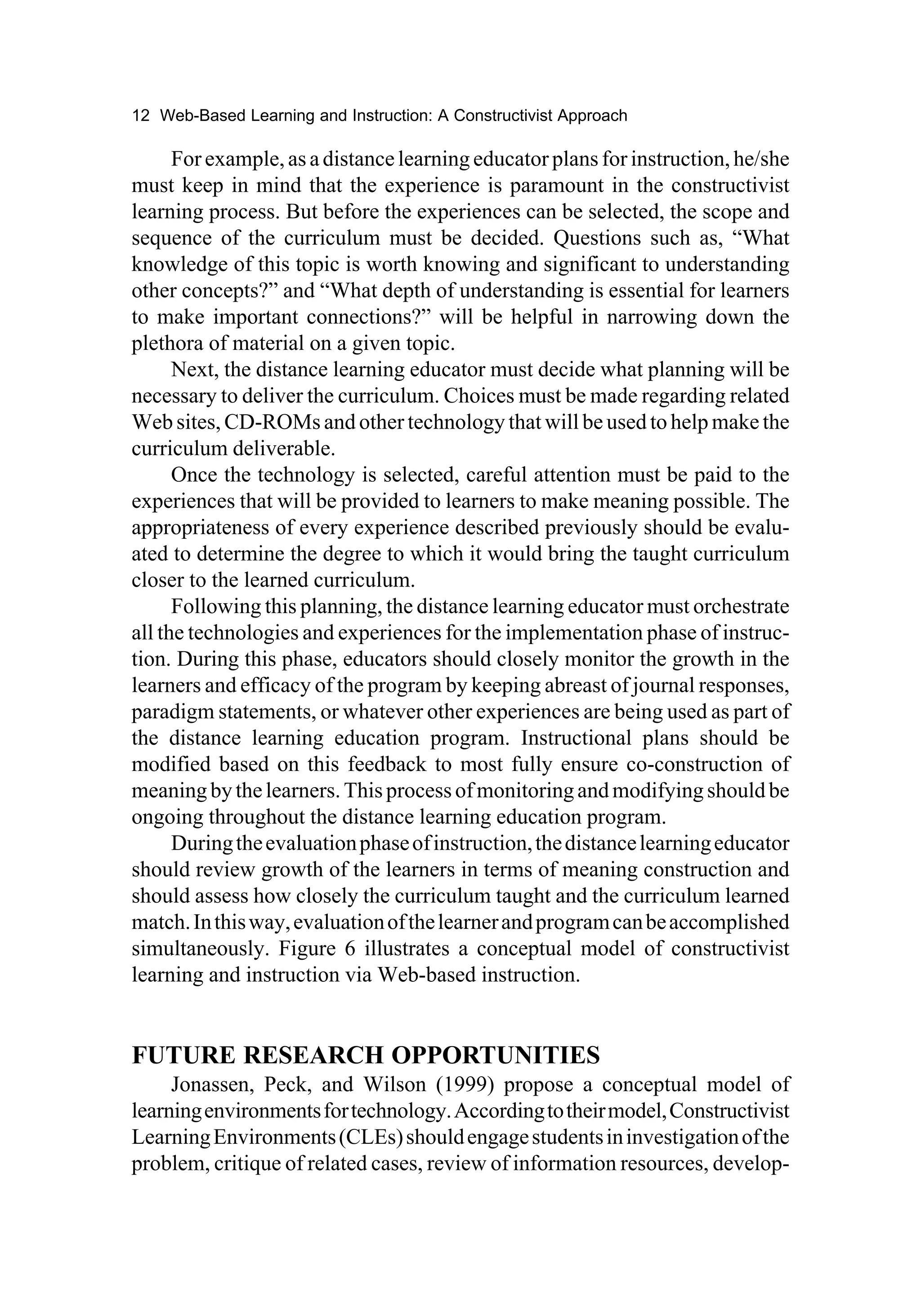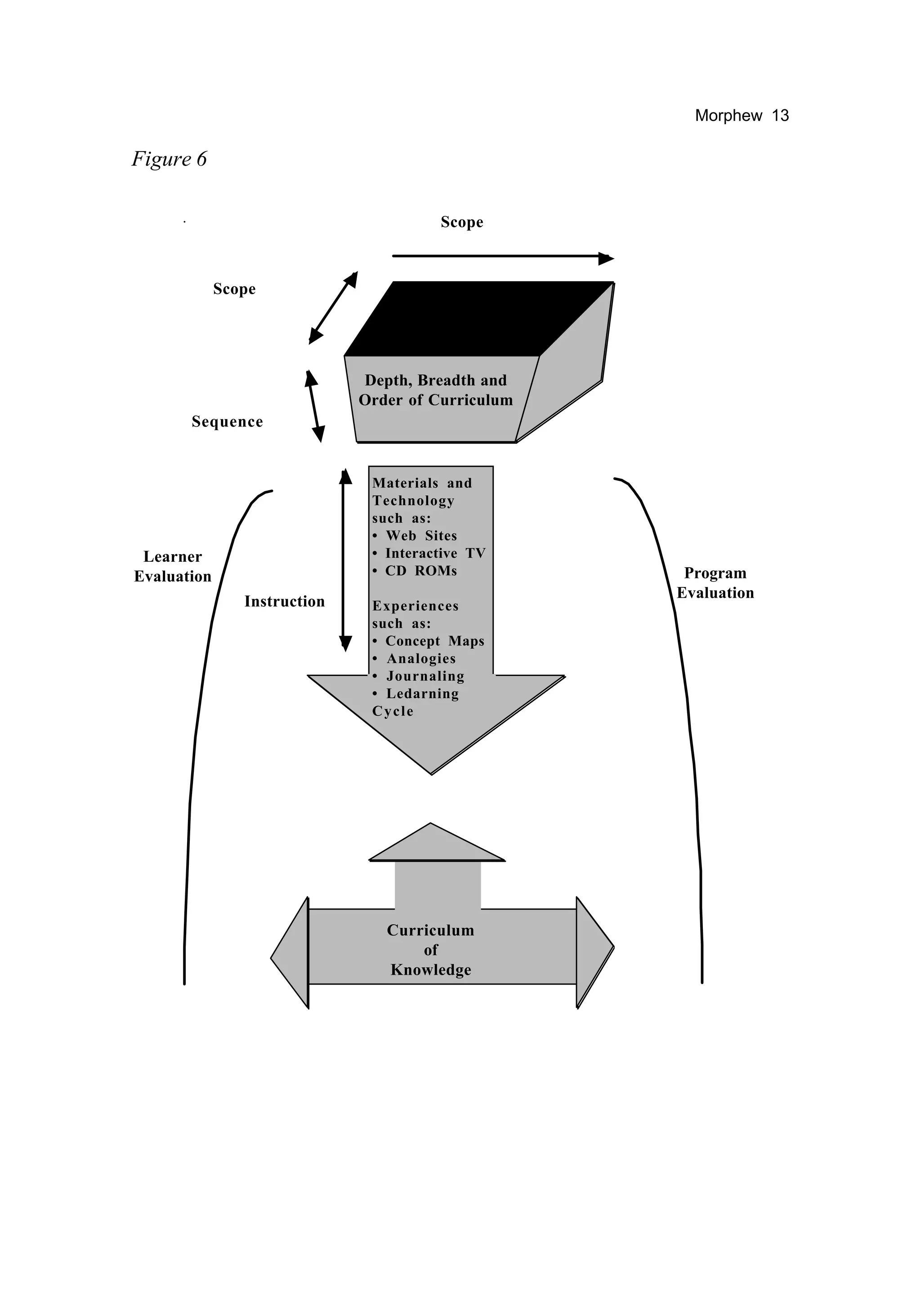The document discusses constructivist learning theory and provides examples of instructional strategies that facilitate constructivist learning. It defines constructivism as the co-construction of meaning through interaction between the learner and their environment. Several key theorists who influenced constructivist thought are discussed, including Dewey, Piaget, Husserl, and Kuhn. Traditional classroom instructional strategies that support constructivist learning include using concept maps, Venn diagrams, models, analogies, hypothesis testing, integrated themes, journaling, portfolios, and cooperative learning.
